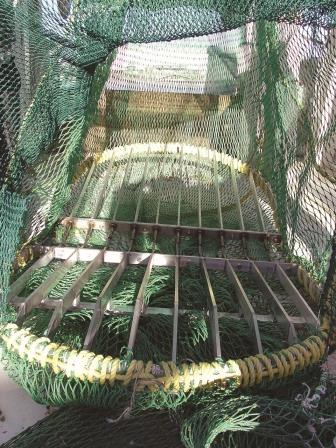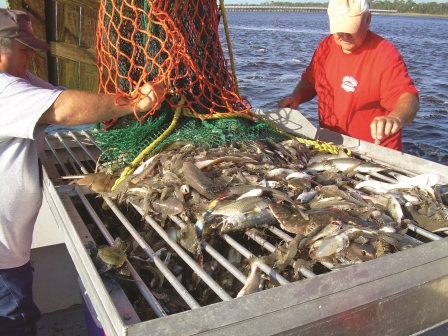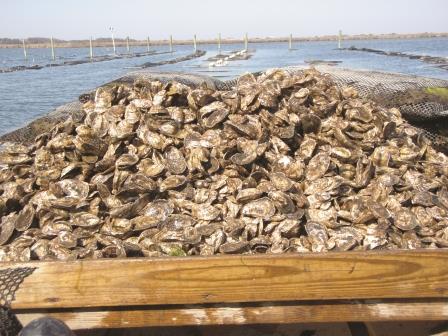“NOAA predicts a near-normal 2012 Atlantic hurricane season,” reads the late May headline of a National Oceanic and Atmospheric Administration news release.
Later, NOAA raises the prediction of hurricanes for the season. Modern technology has improved short- and long-term hurricane predictions tremendously, but it is still an uncertain science.
Several changing parameters influence the production of tropical storms. “Numerous observations, including satellite surveillance and buoy networks that provide sea-surface conditions and temperatures, are all key to predicting hurricanes.
What happens in the Atlantic hurricane basin is impacted by other climate signals around the globe. It’s all connected,” National Weather Service Tropical Cyclone Program Leader Tim Schott explains.
Researchers at the NWS National Hurricane Center primarily are concerned with tropical storms that are currently forming, or the hurricane that is about to hit land. Another group of hurricane scientists, paleotempestologists, such as Scott Hippensteel at the University of North Carolina Charlotte, are concerned with estimating the frequency and strength of ancient hurricanes.
“With paleotempestology we can get a record of short- and long-term hazards for North Carolina of at least several thousand years. This will be of great interest to property owners, the state Department of Environment and Natural Resources Division of Coastal Management, and the North Carolina Department of Transportation,” Hippensteel says.
The geological aspect of the field is relatively new, beginning in the 1990s with studies looking at sand-layer deposits possibly left by hurricanes. At nearly the same time, researchers refined the science by searching the sand layers for tiny shells of creatures from the ocean floor.
These foraminifers (pronounced for-a-MIN-i-fers), single-celled amoeba-like organisms, are leaving clues to the Earth’s geological past. Foraminifers leave behind their shells, made of calcium carbonate, for thousands to millions of years after they’ve died.
North Carolina Sea Grant funded Hippensteel to look for paleo-storm records along the state’s coast. His research technique centers on searching for a certain kind of foraminifer in marshes.
“I think it’s a very worthwhile study because it’s really only in the last 50 to 60 years that we have a comprehensive handle on storms through both satellite technology and the hurricane reconnaissance and surveillance aircraft,” Schott comments.
“Go back to 1900 or years earlier, many storms occurred that were never even recorded.”
Insurance companies want to know: What is the likelihood that a major hurricane will strike North Carolina in the next 10 years? Only three Category 5 hurricanes have struck the United States since 1900. Hippensteel would like to reconstruct millennial evidence of ancient storms. The short meteorological record is just not long enough to predict future events, he explains.
CORING FOR DATA
Hippensteel started his work at Folly Island, S.C., as a graduate student at the University of Delaware. As he recounts it, a friend brought back sedimentary cores from the back-barrier marsh of Folly and needed a micropaleontologist to help him.
The cores were obtained with a vibracore, which is a vibrating machine that sinks an aluminum tube into soft ground. When the two researchers cut open the aluminum tubes containing marsh mud from South Carolina, they saw something that surprised them — layers of sand interspersed in the mud.
Foraminifers, or forams, are particular about where they live. The agglutinated ones build their shells of sand and silt from their environment and are found in marsh mud. They are called agglutinated because they tend to stick together. Those that live on the seafloor build beautifully intricate calcareous shells.
In a “eureka” moment, then-graduate student Hippensteel found ocean-dwelling forams in the sandy layers of the marsh mud. Some were more than 30 million years old. As Hippensteel explains, only a catastrophic event such as a hurricane could have “ripped up that fossil and transported it back into the marsh and deposited it there.”
His work contributed to his master’s thesis and dissertation in the late 1990s; an article published in Palaeogeography, Palaeoclimatology and Palaeoecology; and a chapter in a book about environmental micropaleontology.
The South Carolina study indicated 26 sand deposits, or “wash-overs” where sand was transported from the ocean bottom, over the island to the back-barrier marsh.
The top 80 inches of the 21-feet-deep cores contained fewer hurricane deposits relative to the lower layers. Hippensteel attributes this to reworking by fiddler crabs, which have had access to the site as sea level has risen. The presumption is that with sea-level rise, formerly high-marsh areas have become low marshes, which support more fiddler crabs.
NORTH CAROLINA PAST REVEALED
Certain species of forams live in a low marsh, others in an upper marsh. Some species are estuarine and still others prefer the saltier ocean. Therefore, the occurrence of particular foram species in a sediment core can be used to look back at environmental changes as well as hurricanes.
A recent U.S. Geological Survey-funded study, led by East Carolina University geologist Stephen Culver, sampled cores from Pamlico Sound. Graduate student Candace Grand Pre found large core sections with forams that prefer ocean water. The years when the forams were deposited are determined by radiocarbon dating the sediment around the forams. The dates indicated that these ocean-floor forams were present for about 500 years, beginning about 1,000 years ago.
The researchers reported in The Sedimentary Record that these data suggest the upper Outer Banks collapsed for a period of 500 years, perhaps due to a span of increased hurricane activity. Pamlico Sound then would have been Pamlico Bay and populated by ocean-dwelling — rather than estuarine — forams. They estimate that the Outer Banks reformed just prior to the arrival of English settlers in 1584.
Hippensteel conducted his North Carolina studies near Onslow Bay, a bow-shaped area located between Cape Lookout and Cape Fear. Barrier islands separate the bay from the mainland, creating sounds such as Bogue Sound behind the Tar Landing Bay site.
He surveyed eight back-barrier marshes in Onslow Bay using a gouge-auger core to take samples. Unlike the larger vibracore, this is a handheld hollow steel rod that a researcher can handle alone. The back-barrier marshes are those facing the sound side of the islands and would be expected to contain any overwash of sand left by a hurricane.
It can be dirty work. Hippensteel describes one instance, at a Fort Macon site on the eastern end of Bogue Banks, where he ventured into a low marsh and sank up to his neck. He managed to roll out of the mud but emerged covered with marsh soil on everything but his glasses. He describes himself as “looking like a swamp creature” that frightened a bus full of school children.
After taking a core, he collects sections in zippered plastic bags, then returns to his coastal hotel room to begin several days of processing. This means slicing the cores into 1 cm sections, then sieving the mud until he has only the finest-grained particles.
He examines these with a microscope to determine whether the forams are marsh species or, perhaps, from the ocean floor. A layer of forams from the ocean floor indicates a storm event.
Only two sites proved fruitful: Tar Landing Bay in Carteret County near Morehead City and Alligator Bay in Onslow County, about halfway between Morehead City and Wilmington.
Hippensteel recovered a total of 10 storm layers representing four storms at Tar Landing Bay, and 16 storm deposits representing five storms at Alligator Bay. The same storm layer was found in several cores from each site, indicating consistency of the method and allowing him to count the storms. Radiocarbon dating put the most recent ancient storm at 500 years, the second at 800 years and the oldest at about 1,500 years before present.
All together, Hippensteel accounted for nine Onslow Bay storms in 1,500 years. He believes this estimate seems far too low considering that 22 hurricanes have made landfall in Carteret County and 16 in Onslow County since 1900.
One of the problems with the apparently low estimates could be that fiddler crab burrowing has blurred the records in low marshes. Another could be that only the most severe hurricanes leave a signature.
UNC-Charlotte funded a follow-up study looking at the effects of Hurricane Irene in 2011. This work was revealing because Hippensteel’s team found that Irene left marine forams in only one location of many examined. This particular area was the only place where the wind direction and storm surge from Irene would have brought in ocean forams. He predicts that this limited evidence from Irene will not be detected in years to come.
Hippensteel reflects that he found several storm events that occurred about 800 years before present. This could represent the large storms that the ECU group hypothesized caused a collapse of the upper Outer Banks.
Hippensteel’s North Carolina work will soon be published in an academic journal. (Watch Coastwatch online for a link.)
And he’s not giving up on finding a more complete record of storm events in North Carolina. As he says, “it’s always fun when you’re collecting data.”
URBAN GEOLOGY
Upper-level undergraduate students in one of Scott Hippensteel’s geology classes at the University of North Carolina Charlotte might be surprised to be taking a field trip to the mall.
Urban geology can involve studying cracks in sidewalks, looking at weathering tombstones or examining the types of rock in downtown buildings. A subset is paleogeology, or the study of ancient geology. Hippensteel’s students study the ancient fossils in the limestone tiles at Southpark Mall in Charlotte.
Hippensteel’s article, “Functional Morphology at the Mall” in The American Biology Teacher mentions other public sites with fossils, including monuments and museum buildings in Washington, D.C., and state capital buildings in Richmond, Va.; Columbus, Ohio; and Raleigh. An Internet-based guide is available that describes fossiliferous stones in the nation’s capital.
The two types of fossils at Southpark Mall are ammonoids and belemnoids from the late Jurassic period, about 150 million years ago. More than 800 ammonoids and 300 belemnoids are found in the stone tiles in the mall, which were selected for their beauty. The fact they also are useful to geology classes is a bonus.
Hippensteel’s students worked with the ammonoids, which look much like nautilus shells. The fossils are readily studied because they are in cross section, which enables the class to measure several aspects of their two-dimensional shape. The students then use mathematical formulas to predict the three-dimensional shapes of the animals.
When they compared their results to classic studies on ammonoid geometry, they found good agreement. The exercise gives the students experience in scientific measurement, modeling and accessing the scientific literature.
“Students were surprised to find they had spent many hours shopping on top of a valuable source of fossils,” Hippensteel comments.
“Functional Morphology at the Mall” is available at: www.bioone.org by searching for the title of the article.
To find out about urban geology in Washington, D.C., go to: www.dcfossils.org.
This article was published in the Holiday 2012 issue of Coastwatch.
For contact information and reprint requests, visit ncseagrant.ncsu.edu/coastwatch/contact/.
- Categories:



